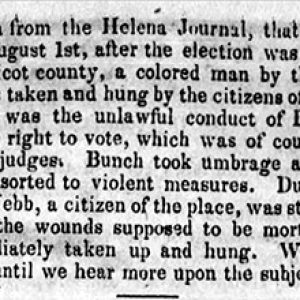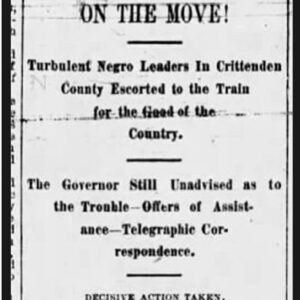Entry Category: Civil War to Gilded Age - Starting with C
aka: John Thomas and Will Caldwell (Lynching of)
Canfield Race War of 1896
Capus, Henry (Lynching of)
Carter, Allen (Lynching of)
 Chicot County Lynching Article
Chicot County Lynching Article
Chicot County Race War of 1871
aka: Chicot County Massacre
Clarendon Lynching of 1898
 George Corvett Lynching Article
George Corvett Lynching Article
Cotton, John (Lynching of)
Covington, Riley (Reported Lynching of)
Coy, Edward (Lynching of)
Crenshaw, George (Lynching of)
Crittenden County Expulsion of 1888
 Crittenden County Expulsion Article
Crittenden County Expulsion Article




